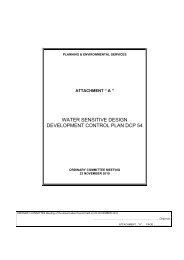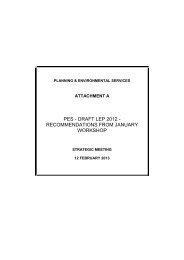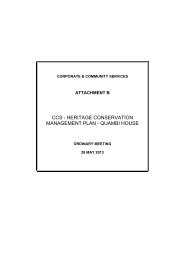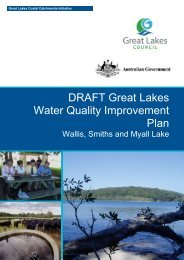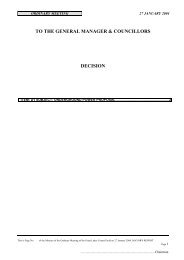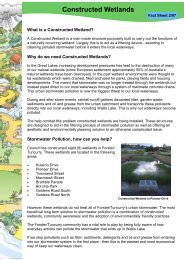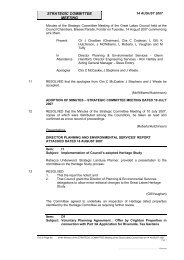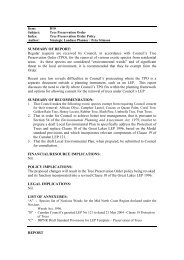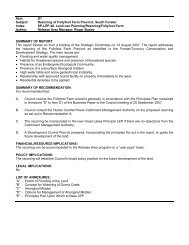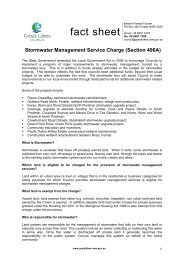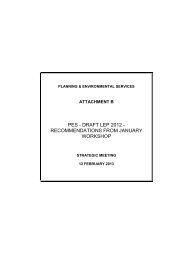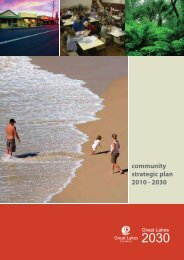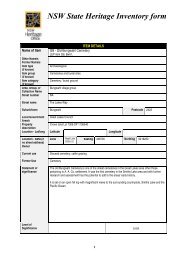13.2 The Wallis Lake Estuary Management Committee - Great Lakes ...
13.2 The Wallis Lake Estuary Management Committee - Great Lakes ...
13.2 The Wallis Lake Estuary Management Committee - Great Lakes ...
Create successful ePaper yourself
Turn your PDF publications into a flip-book with our unique Google optimized e-Paper software.
<strong>Wallis</strong> <strong>Lake</strong> <strong>Estuary</strong> <strong>Management</strong> Plan<br />
[Plate 4.6: Unauthorised modification and dumping in the riparian zone in Muddy Creek]<br />
E.7<br />
<strong>Management</strong> Area A, B, C, D, E, F<br />
<strong>Management</strong> Objective<br />
Protect important shorebird roosting, nesting and foraging areas<br />
Action<br />
No<br />
E.7.1<br />
E.7.2<br />
Action<br />
Support the findings of the Shorebird assessment and marine values data<br />
collation program and incorporate into future estuary and foreshore management<br />
and conservation planning<br />
Continue to protect migratory birds and bird habitat under JAMBA and CAMBA<br />
international agreements<br />
Indicative Priority Responsibilities Progress<br />
Cost<br />
Staff time Immediate (A3) DEC, GLC<br />
Staff time High (B3) All levels of<br />
Government<br />
Comments<br />
Previous studies have reported that the Wallingat State Forest and <strong>Wallis</strong> <strong>Lake</strong> Islands (particularly Little Tern, Sand, Godwin, Miles, Sand and Pelican Islands) are important<br />
areas of bird habitat requiring conservation (Browne & Scott 1985; Carter 1995). <strong>The</strong> osprey (Pandion haliaetus), little tern (Sterna albifrons) and pelican (Pelecanus<br />
conspicillatus) have all been identified in these studies requiring special conservation attention. However these studies are in need of updating.<br />
<strong>The</strong> Shorebird assessment and marine values data collation program commenced in 2004 and will provide a systematic assessment of shorebird populations, nest sites, foraging<br />
sites, roosting sites and local movement patterns needed to inform future estuary and foreshore management and conservation planning.<br />
Ongoing<br />
49




